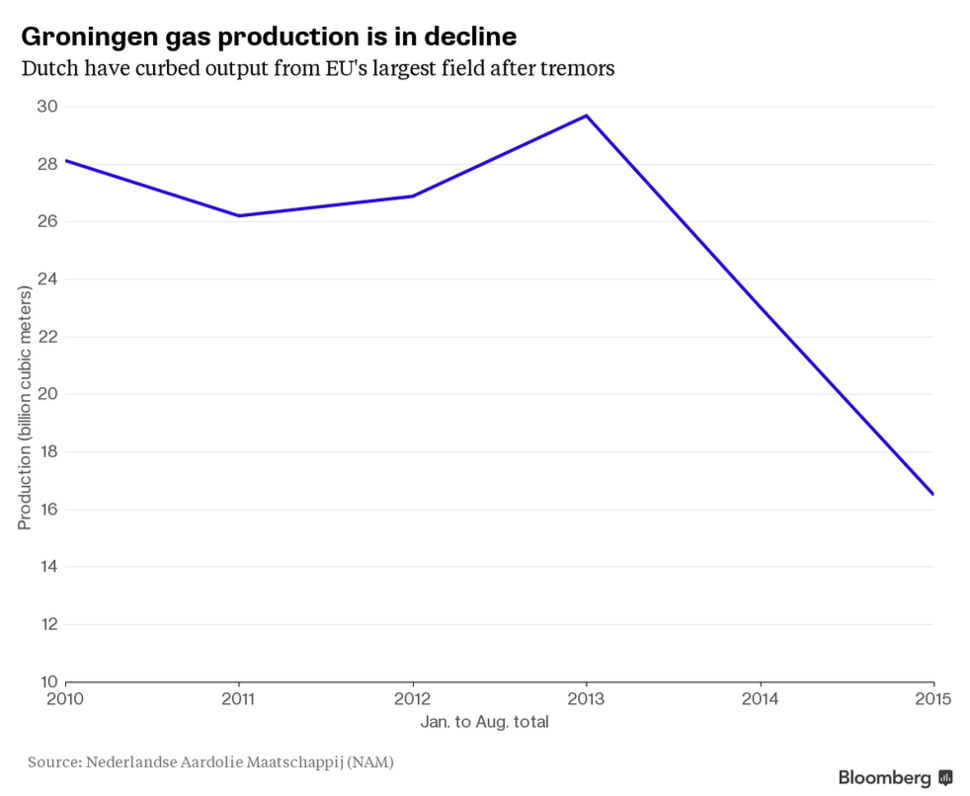The Groningen gas field, discovered in 1959, is the largest gas field in Europe. It’s also a very shallow gas reserve, at about 3 kilometers below the surface. Since the 1960s, the Dutch government has gained an estimated 250bn euro from gas sales to other countries [2]. The Dutch government expects 9.1 billion euros of gas sales this year alone, with 60% coming from Groningen [1]. The money gained is obviously important for the Dutch economy and their customers but at what price? Will they keep gas flowing until earthquakes intensify? Until a sinkhole forms? Until there are casualties?
Chiel Seinen, who represents the NAM oil company collective incorporating Royal Dutch Shell Plc and Exxon Mobil Corp. said, ‘Until now we always knew that earthquakes could occur, now we don't know what the new maximum could be,’. When asked if he believed lives could be in danger he replied, ‘You can never exclude anything. If people are in the wrong place at the wrong time…’ [2].
After 2012, about 60% of the homes in Middelstum had been affected by the quakes. There are about 60,000 homes in the ‘earthquake zone’ [2]. Historic buildings, people’s property, and arguably people’s right to live in peace are being taken away. Most buildings in Groningen are many years old and were not built to withstand earthquakes. The buildings are mainly concrete structures which grow large cracks from earthquakes and this significantly reduces their structural integrity and safety. The problem has gotten so large that there are structural engineers at TU Delft and other institutions researching ways to increase the safety of these buildings. A proper impact assessment should be performed on the situation before extraction should be allowed to resume.
There are decisions being made under uncertainty of the ultimate outcomes to continue extraction at the expense and without the informed consent of the constituents. According to the precautionary principle, anticipatory action should be taken to nullify further harm to the people, property, and ecosystems of Groningen.
Sources:
Image Source from [1]
- Gilblom, Kelly, and Fred Pals. 'Riled Locals Fight Output From Europe's Largest Gas Field'.
Bloomberg.com. N.p., 2015. Web. 21 Oct. 2015.
2. BBC News,. 'Groningen Gas Fields - The Dutch Earthquake Zone - BBC News'. N.p., 2015. Web.
21 Oct. 2015.
